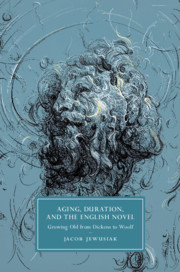Book contents
- Aging, Duration, and the English Novel
- Cambridge Studies in Nineteenth-Century
- Aging, Duration, and the English Novel
- Copyright page
- Dedication
- Contents
- Acknowledgments
- Abbreviations
- Introduction
- Chapter 1 Aging Theory
- Chapter 2 No Plots for Old Men
- Chapter 3 Life After the Marriage Plot
- Chapter 4 A Wrinkle in Time
- Chapter 5 The Technology Age
- Chapter 6 Gray Modernism
- Afterword
- Notes
- Bibliography
- Index
- Cambridge Studies in Nineteenth-Century
- References
Bibliography
Published online by Cambridge University Press: 14 November 2019
- Aging, Duration, and the English Novel
- Cambridge Studies in Nineteenth-Century
- Aging, Duration, and the English Novel
- Copyright page
- Dedication
- Contents
- Acknowledgments
- Abbreviations
- Introduction
- Chapter 1 Aging Theory
- Chapter 2 No Plots for Old Men
- Chapter 3 Life After the Marriage Plot
- Chapter 4 A Wrinkle in Time
- Chapter 5 The Technology Age
- Chapter 6 Gray Modernism
- Afterword
- Notes
- Bibliography
- Index
- Cambridge Studies in Nineteenth-Century
- References
Summary

- Type
- Chapter
- Information
- Aging, Duration, and the English NovelGrowing Old from Dickens to Woolf, pp. 185 - 198Publisher: Cambridge University PressPrint publication year: 2019

